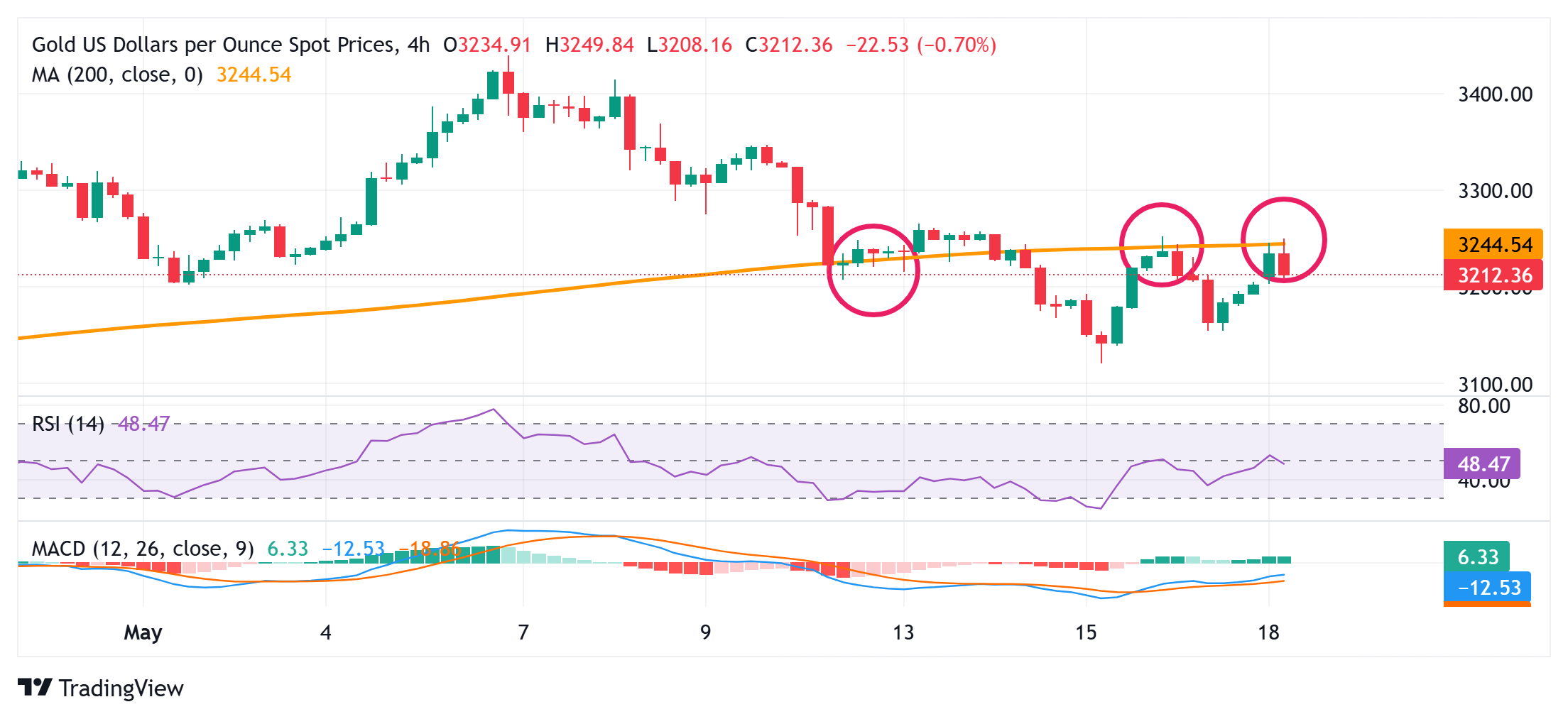-
Gold price remains steady near the upper end of its intraday range during European trading hours.
-
The commodity faces pressure from rising US bond yields, but downside risks remain limited.
-
Renewed safe-haven demand, expectations of a Fed rate cut, and a weaker USD provide support to the XAU/USD pair.
Gold price (XAU/USD) remains resilient after a period of volatility, holding near the upper end of its daily range around the $3,250 level during European trading hours on Monday. The precious metal finds support as a surprise downgrade of the US government's credit rating boosts safe-haven demand amid growing concerns over the US economic outlook and fiscal stability.
However, optimism surrounding the 90-day US-China trade truce and prospects of further US trade agreements with other nations limit the upside for the safe-haven commodity. Nonetheless, a combination of factors could help cushion potential losses.
Adding to gold's appeal, US Treasury Secretary Scott Bessent's reaffirmation of President Donald Trump’s tariff threats, alongside ongoing geopolitical tensions, acts as a supportive factor. Additionally, expectations that the Federal Reserve (Fed) will implement further interest rate cuts in 2025 keep the US Dollar (USD) subdued, providing an additional boost to the non-yielding yellow metal.
Given these mixed signals, it remains prudent to wait for a strong follow-through selling before considering a resumption of the recent retracement slide from the $3,500 psychological level or the all-time high reached in Apri
Market Factors Influencing Gold Price:
- Gold's appeal has increased following Moody's downgrade of America's sovereign credit rating from "Aaa" to "Aa1" on Friday, citing worries over the expanding debt load. This comes amid the House panel's approval of a tax cut bill by US President Donald Trump, which could significantly raise national debt levels.
- Persistent geopolitical uncertainties add a tailwind to gold. US Treasury Secretary Scott Bessent reiterated Trump's threat of imposing tariffs on trade partners who fail to negotiate fairly.
- Meanwhile, continued geopolitical conflicts, including the Israel-Gaza situation and Russia's record drone attacks on Ukraine, sustain demand for safe-haven assets.
- A softer USD, stemming from bets on further Federal Reserve interest rate cuts in 2025, supports the non-yielding yellow metal.
- Recent economic data, including a dip in the US Consumer Sentiment Index and weaker-than-expected retail sales, also feed into recession fears, reinforcing expectations of rate cuts.
- Optimism over the US-China trade truce and potential trade agreements with other countries restrain gold's upward momentum. This reduces the immediate appeal of safe-haven assets, despite ongoing economic and geopolitical risks.
Technical Outlook:
Gold price faces resistance near the 200-period SMA on the 4-hour chart, indicating caution before confirming a bullish trend. A sustained break above the $3,250-$3,252 zone would signal potential for gains towards $3,274-$3,275, with $3,300 as a key psychological level.
Conversely, a break below $3,200 could trigger further losses toward the $3,178-$3,177 region, with a deeper decline exposing the $3,120 mark, the lowest since April 10, followed by the $3,100 and $3,060 support zones.
Gold's position near the upper range of its daily chart reflects a delicate balance between safe-haven demand due to economic and geopolitical uncertainties and restrained gains from improving trade sentiment. As the market weighs potential Fed rate cuts against ongoing trade developments, gold traders should closely monitor key technical levels and upcoming economic data for directional cues.






